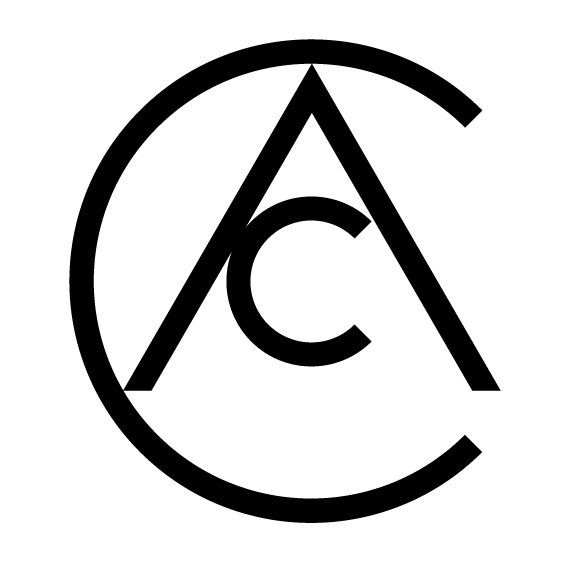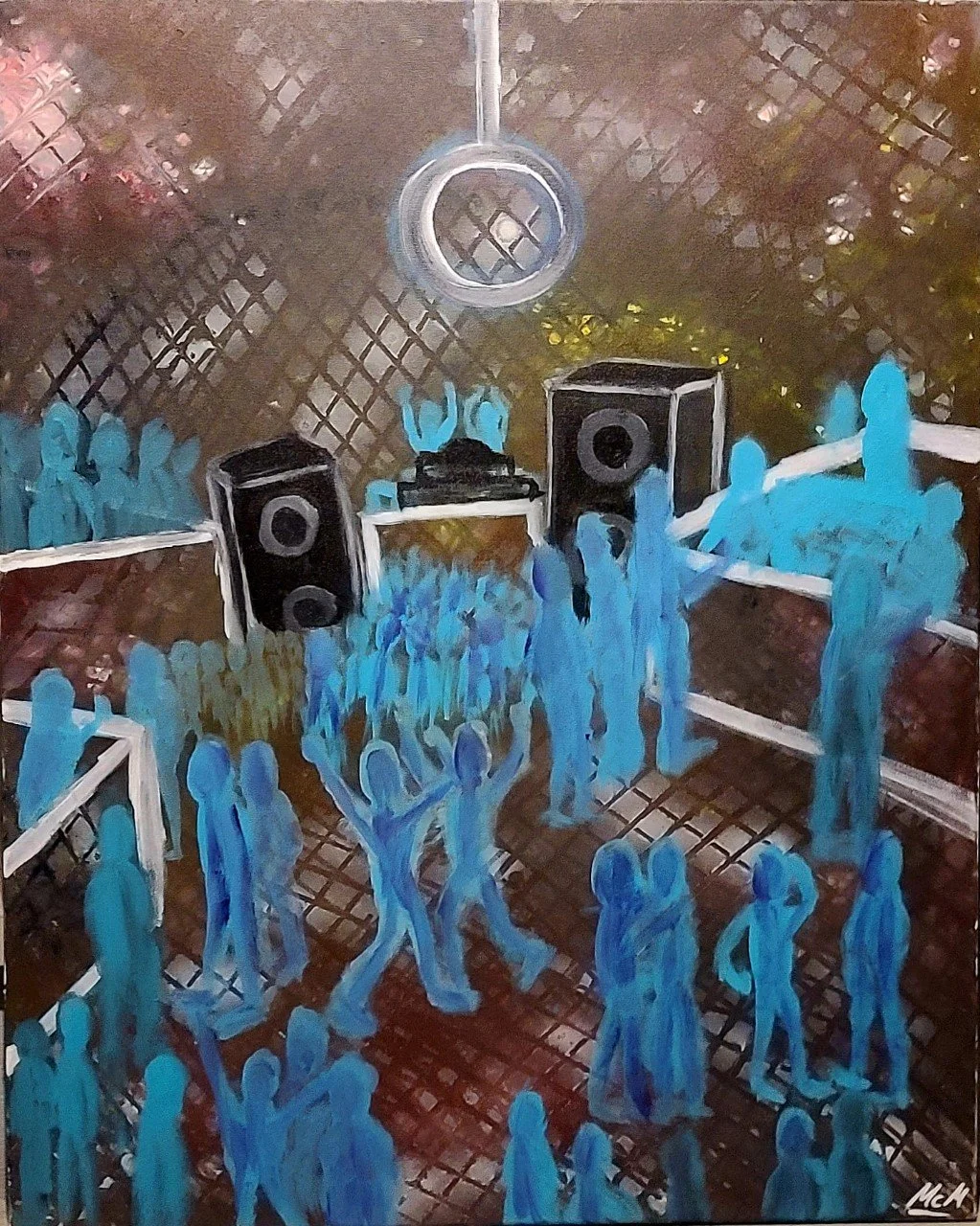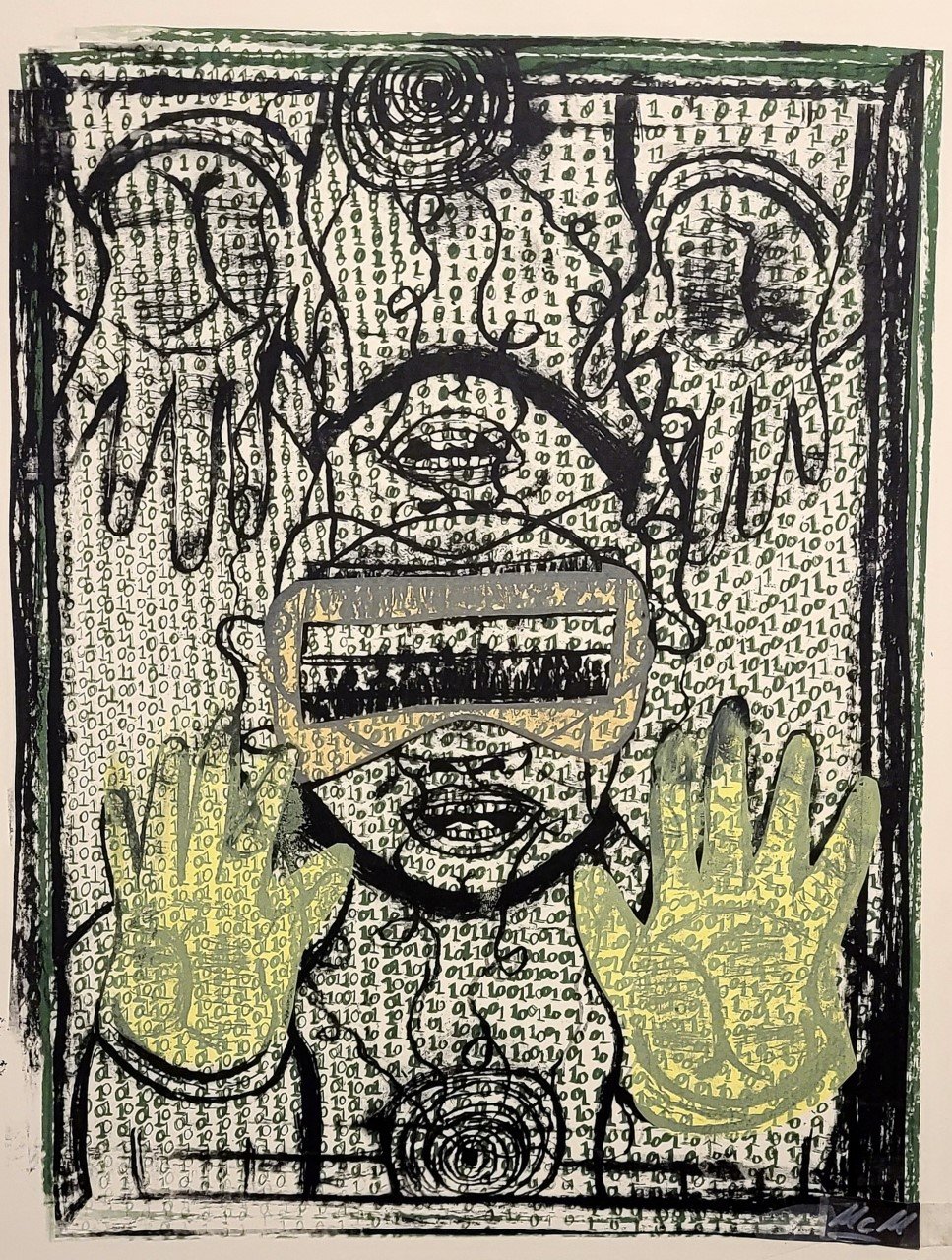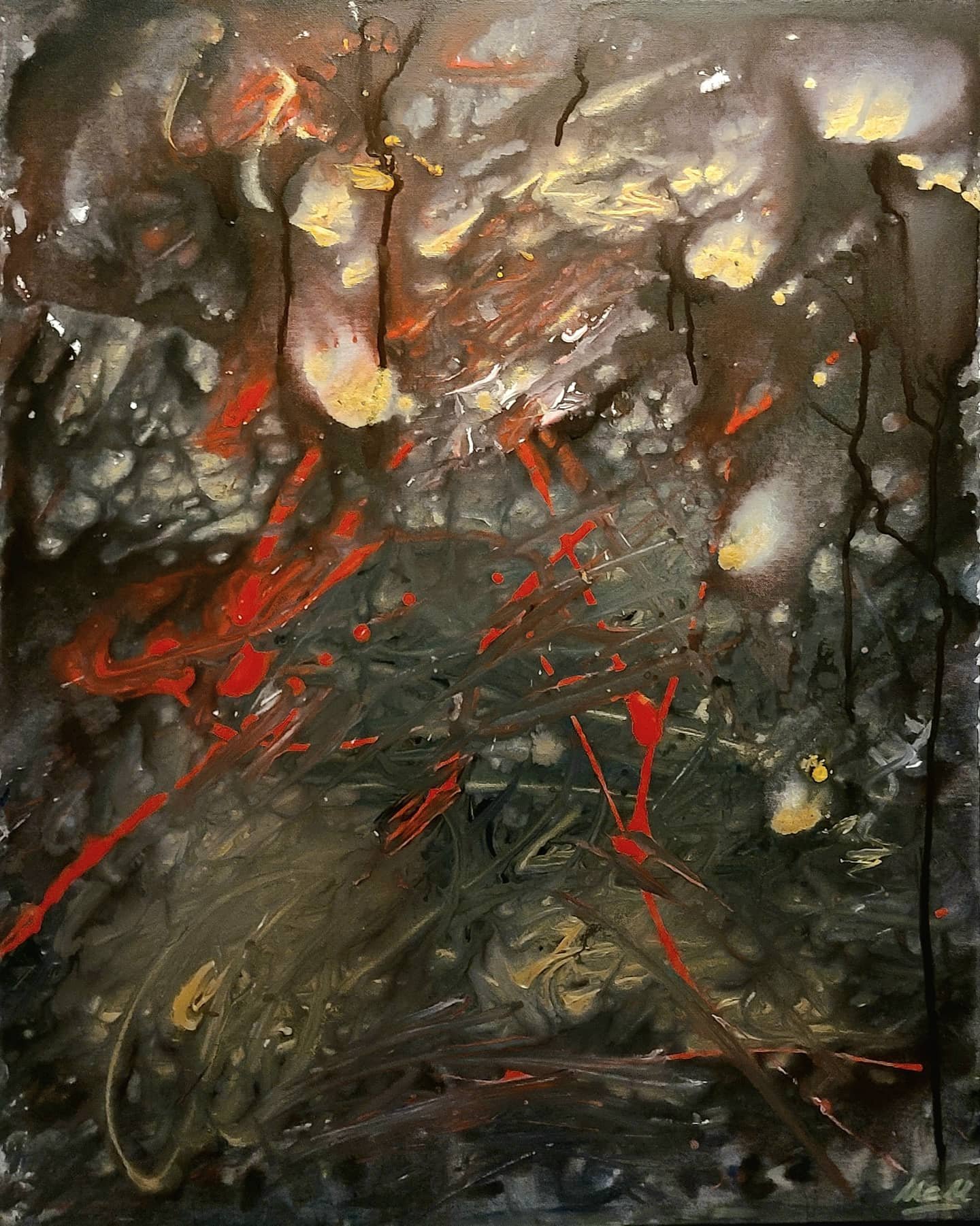Interview with Matthew Mark
Artist Matthew Mark (MCM) hails from the great white north of Canada. Eloquently, MCM is a visual artist / painter in contemporary art from this new age called “Metamodernism”. It is what comes after the post modernism era for the 2020’s beyond and moving forward in the arts. MCM is multifaceted in his discipline and art practice. His experiences of growing up in western Canada is comprised throughout his artwork. When it comes to the visual arts, Matthew focuses on his own style of painting, drawing, printmaking, sculpture, and installation. He observes light and dark themes and everything else in between. MCM experiments with mediums such as acrylics, charcoal, graphite, ink, and sculpturing. Art genre influences of expressionism and fauvism are both interwoven together. Articulated through the distinct artistic idealization being portrayed throughout his work with a touch of spontaneity, playfulness and rawness. It is a true indication of the artist being creative, honest, sincere, passionate, authentic, real, and free. It captivates the mind and leaves room for some ambiguity to be thought about by using our imagination when being immersed in MCM art works. The works range from figurative, abstract and mixed media art. As of late MCM has taken his art across Canada showcasing his work. His art has been exhibited in certain places so far such as in Munich/Germany, Vienna/Austria, London/England, Milan & Venice/Italy, San Diego (California, USA), Miami (Florida, USA), and has made a vast impression being a part of a digital art exhibition held in New York City at Times Square.
“I delve into the realms of the light and dark and everything else in between. My art is disclosing what is already known and also, the Unknown..” – MCM
Matthew, in your statement, you discuss the dichotomy of light and dark and everything in between. Can you elaborate on how this theme has evolved in your work over the years, and how do you balance these elements to maintain coherence in your artistic narrative?
I look at the contrast of light and dark, day and night, white and black, and things going on in between as dualities that can be used as a method of expressionism and the telling of an ambiguous or unambiguous narrative metaphorically or symbolically in my art. I’ve had relationships with these dualities and experienced things in my life where one minute life can be going well, running smoothly, treating you kindly. But I’ve also experienced the bad times, the worse, and the unkind. Though the last few years, I can say that this method of mines, when I go through certain periods in my life it allows room for me to get inspiration, gain experience, knowledge, wisdom, having the passion & desire to continue doing my art. It hasn’t changed for me when being a visual artist. I still like to observe, linger, and dwell into certain environments I engage in once in awhile that can sometimes be different and interesting. To be able to feel, sense, undergo, perceive, and perhaps learn something new as a visual artist and reflect these types of experiences back into my style of art in whatever medium I choose to do is gratifying. These dualities help characterize my style of art through disclosing different points of views, concepts, situations, environments, groups, and people in the most absolute terms. Expressing the subjective feelings and emotions I’ve gained and putting it back in an art piece. The dark is the mysterious, the unknown and the source of light associates itself with a sense of joy, purity, and creation. One cannot do without the other in our human existence. In the artsy world I guess we would call this type of technique “chiaroscuro” lol. I balance these elements by embracing my strengths and weaknesses, knowing my flaws on where I stand. This includes having the knowledge and awareness of my dark side that consists of stubbornness and greed while having the empathy, compassion, and forgiveness from my light side. You need that balance for human life to be played out. I’m in control of my own words, actions, and my own path. Because of balance I’m able to know from right and wrong and can control my emotions. Themes of the light and dark or two other contrasting elements evolves as to whatever current state the world is in or whatever state I’m in as we enter 2025 and onwards. We are on the threshold of something manifesting in the metamodern era socially, culturally, and politically. The in between could have multiple meanings and directions in different avenues. I suppose it’s based around being intermediate, the struggles, the stages, the steps, the qualities, the state somethings in, or the progress, the experiences, the choices, the decisions, and movements that we go through while being in the contrasting conditions of two realms.
You mention being influenced by both expressionism and fauvism. Could you discuss a particular piece or series where these influences are most apparent, and how you have adapted these styles to forge your unique artistic language?
In a subjective reality, expressionism had a significant effect on modernity and post modernity. It helped paved the way for certain art genres and art movements such as pop art, minimalism, and conceptual art. I’m just continuing what the forefathers started and did in the visual arts especially in painting and other mediums from the modern era but making sure I update and expand on this genre of art for this metamodern age. With fauvism I’ve always been a fan of colors. I think that fauvism gives objects and shapes an unusual appeal using vibrant coloring to evoke and pinpoint a certain feeling and experience instead of painting realistically representing the world exactly how it looks. I like that there’s an artistic idealization with fauvism in art works. The exaggerated usage of colors emphasising the emotional response on the composition. My Aurora Lights series brings that out along with my other figurative paintings that involves landscape, atmosphere, and scenery. Some of my abstract paintings have that fauvist influence of having that idealization in the work where it’s revealing an emotional response. I forged these two art genres and continue to use expressionism as a label and tool to express myself subjectively from my ideas and experiences back into my artwork and paintings. The lines I use, the brushstrokes, the tone, the shapes, the sizes, the value, space, and color all represent my artistic language in my work. I like that expressionism rejects realism in art and that the genre relies on artistic idealization based around from my experiences, my perspective, my ideas, my feelings and emotions unveiling the audience something that is known or unknown while being immersed in my work.
Your use of diverse mediums—acrylics, charcoal, graphite, ink, and sculpture—is intriguing. How do you decide which medium best suits the idea you are exploring in your art? Can you share your thought process behind selecting a particular medium for a project?
I love being flexible and using different mediums because I want to be well-rounded and well-adjusted as an artist. I like being versatile in the visual arts. I want to be able to be good at a few mediums because it keeps the art interesting, and it keeps me going as a practicing artist. The choice of picking a medium when doing an art piece all depends on the project and how I feel from that moment in time. The first stages are thinking and the thought of the art piece and then laying out the blueprint and foundations such as sketching, brainstorming, maybe even creating a maquette first, and includes doing some research. Then choosing the specific medium to do the art piece and then creating it physically or digitally on what you had planned out. I like being a multifaceted creative I suppose lol. I enjoy the journey and the process when doing a new art piece.
Your artworks leave space for ambiguity and personal interpretation. What is the significance of ambiguity in your art, and how do you craft your pieces to invite multiple interpretations without losing the essence of what you wish to communicate?
I look at ambiguity as another tool for the visual artist to use for an emotional response within the work that is being produced. The composition that allows room for inconclusiveness, the unsolved, the unsettling, the undecided, etc. leaves a gap for the viewer and audience to engage and think about the many possibilities that may have occurred in this art piece from the subjective reality. Some of my work leaves room when my work does not provide a real answer, conclusion or enough context and narrative to understand what it’s trying to disclose. I allow my work to be able to have the freedom for any viewer to have their own intake and personal interpretation of my art. Everything I do when crafting an art piece is mostly thought about first before I apply it on a canvas. I have complete control of how my art piece will look visually if I decide I want my art piece to be ambiguous to any viewers who will look at it. Give something to think about and to be entertained as well. My art doesn’t lose its essence when trying to communicate with a core audience because my art is being made by a human being and is associated with the human condition and human experience. It is a response and reflection of humanity at the end of the day of things we love, fear, envy, and so on.
Having exhibited across various cultural contexts—from Munich to Milan, and New York's digital sphere—how do you find your work resonates differently across these diverse audiences? Do these international exposures influence the way you approach new projects?
In the last three years I had the opportunity to showcase my artwork across Canada and had some of my work exhibited in certain parts of Europe and the United States. I’ve been travelling a lot lately and seeing art from all over. I find that my work resonates with everyone culturally internationally so far because my work is very up to date, reflects what’s currently happening in society and I’m also part of this new age of metamodernism as a visual artist in the 2020’s. I’ve had many who gave me good feedback and understood what my work meant to them from all over. These international exposures don’t change how I approach new art projects. For me I just wanted my work to be seen and heard anywhere and everywhere. As we continue at present time, I’m still getting my work out there in different places. I’m an artist that wants to gain the respect from my peers and from the art world. My experiences so far led me to conclude that there is an importance in art and culture in society. Depending how your artwork is and how it looks. It gives us feedback and makes a connection on a deeper meaning through the expressionism I create for us to understand better on our experiences in the real world and how we disclose and respond subjectively to information for people during this new age.
Could you walk us through your creative process for developing a new piece? From initial concept to execution, how do you navigate the challenges that arise, particularly when working with mixed media?
When I decide to do a new painting or do something in printmaking or a sculpture piece I tend to do it when I need to get things out of my system and express them in an artistic way. With mixed media art it would be no different. Depending on the project I still think about the concept, brainstorm, sketch out some ideas and write things out and may or may not do some research on the new project in order for me to have a better understanding of what needs to be created. After the creative process of planning then the action takes place. Getting the proper supplies, tools, canvas, paper, with this medium etc. I will then start creating the art. Executing what I planned out from my ideas. It is only once in awhile that I end up doing a mixed media art piece out of being spontaneous at that time and moment. Usually, I do have a blueprint or a plan before I do the actual mixed media piece. Some of the challenges that arise for myself with working mixed media is trying different materials, making sure the mediums blend well together when combined for the art piece cause if it doesn’t look or feel right I lose motivation.
You aspire to create art that is meaningful and impactful. Can you share a story or feedback from an observer that particularly affirmed the influence of your work? How do such interactions feed back into your creative process?
Those things I aspire to be as a visual artist. I remember when I was doing my showcases across Canada, I had people checking out my work and complimenting me and asking questions on a particular art piece called “American Dark.” I did this piece through printmaking/woodcutting. These interactions were interesting. The feedback I got was constructive and that I had compliments like “that piece tells the truth”, another was “it’s definitely what’s going on right now in our world at the moment and still ongoing,” and was told “this is an upgrade from the original, American Gothic”. The piece was an appropriation after all. Observers were quickly immersed in my work and enjoyed that artwork in particular. It is this type of constructive criticism, the appreciation and admiration from these viewers of my art that makes me feel like I did my job right as a visual artist and that I should continue with this path and journey in life as I have something to bring to the art world. It makes me feel confident and self-assured that I can safely keep going and producing more works of art.
Your art aims to explore humanity through a subjective lens. How do you decide which aspects of human experience to highlight in your art, and what role do your personal experiences play in these choices?
Yes, I’m exploring the human condition/humanity through my thoughts, feelings, and experiences subjectively. I decide which aspects of the human experience will be reflected back into my artwork when my inner voice and my consciousness tells me too. This decision to highlight a certain aspect of things from the human experience happens when I reflect on my past previous experiences or something that happen lately through my deep inner thoughts, self-awareness, and self-talk. Something from the internal that allows me to reflect and then finally conclude this will be my next art piece I will do.
You mention a sense of freedom in your artwork. How do you maintain this sense of spontaneity and playfulness in your practice, especially when facing the commercial or critical expectations of the art world?
I maintain my sense of artistic freedom in my art by acknowledging and having the capability to create without battling external forces controlling how my art should be. Now with commercialism in the art world and critical expectations they do not intimate me or make me want to conform just so I can sell an art piece. I will still do things my way when being creative and defining my own taste and style. No one I know so far has influenced me to change how my art should look just to appease an audience or to sell. I became a visual artist so I can be free from the corrupt world we live in. Having creative independence is an important thing to have for all visual artists out there. If my art piece or anyone else’s art has a commercial appeal and caters to an audience that is fine, as long as it has the passion and authenticity behind it. I define success being a visual artist by staying true to my creative vision, being persistent, and producing artwork that resonates with an audience. There isn’t anything wrong with achieving commercial success at this day and age for visual artists. We are human beings too, we have families to raise and to feed, bills to pay etc. There can be balance between having artistic integrity and commercialism. Everyone has their own preferences. It is up to the artist on whatever direction/path they choose to go with their style of art. You have the power and control of your own artistic creation. If you want to be low key and small time for your art career and be a part of a local art community well, there is nothing wrong with that. That is entirely up to the individual. But at least be aware of the pros and cons if you’re an artist that chooses to go for a more commercialized direction. One thing I know for sure is that I really want to tear down generic art stereotypes like “the starving artist” or “Artists that can’t do other activities outside of the box.” Some of the misconceptions perceived by the public towards visual artists. Visual artists come from all walks of life. Everyone is different in their own little way. We all come from different upbringings. What ties us all together is our art that reflects the diversity from our own experiences.
Are there new themes or mediums you are eager to explore in your future works? What directions do you see your artistic journey taking in the next few years, especially considering the evolving landscape of contemporary art?
Currently I’m trying out a new medium and that is ice sculpture. Had a blast and enjoyed myself lately at a workshop where I learned how to start ice sculpturing. The city where I’m from, our winters can be very brutal and harsh. Sometimes on certain winter days the weather can drop to about minus 30 or more. In the next few years, I see myself and my art continuing to shine, be seen, and heard from all over and with more opportunities to expand and grow. Continuing having my work to be shown at major art fairs, galleries, venues, and publications. Perhaps do some installations and murals if I’m the selected artist for the project. Hope to meet more artists from around the globe. Have my art be a part of pop culture. Perhaps maybe even do collaborations with artists in the future, learning new tricks and techniques and new mediums as well. I keep the interest in art going…for arts sake during this new age of metamodernism. Perhaps this metamodern generation can get us all out of some of the rut we are currently stuck with from the post-modern era. I’ll be involved one way or another making my contributions…til then, I’ll be in the shadows.
Be mindful & humble,
MCM


















